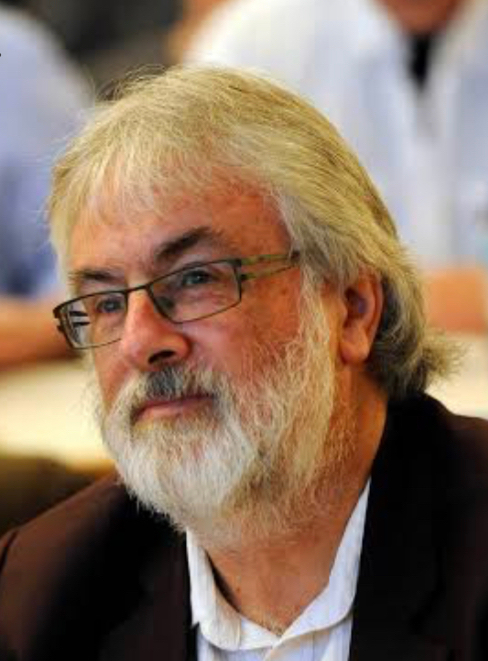What has a pay freeze got to do with a universal public health system? Actually quite a lot. Health systems, especially public hospitals which handle the more complex and urgent cases that the rest of the system can’t fix, are by their very nature labour intensive. Overwhelmingly delayed or denied access to public hospitals are due to workforce shortages of at least one occupational group.
To the extent that pay impacts on workforce morale, retention or recruitment it also impacts on the accessibility, quality and effectiveness of a health system. This is no more the case than for medical specialists.
Blindsiding decision
On 5 May in a move that blindsided so many, especially those directly affected, Public Service Minister Chris Hipkins announced that public servants earning more than $60,000 would only be offered pay increases under select circumstances for the next three years. Further, there would be no pay increases for those earning more than $100,000. Pay increases would only apply to those earning less than $60,000 (about 25% of all public servants).
The pay freeze isn’t established by a change of law or regulations. But this isn’t the only way to achieve a pay freeze. The Public Service and Finance Ministers are giving ‘guidance’ to the employers of public servants. But this guidance is the kind of guidance you have when there is no guidance. Public sector employers are required to adhere to it.
Finance Minister Grant Robertson said this decision was necessary to keep a lid on public debt, which had skyrocketed during Covid-19 to pay for expensive measures like the wage subsidy. This was as good as it got as justification. He chose not to mention his government’s generous Amazon subsidy.
Robertson’s justification was then quickly contradicted by the admission that there was no estimate of how much money would be saved by the freeze and the subsequent release of the Crown accounts which revealed that the Government’s financial books were $5.2 billion better off than forecast in December.
Divide-and-rule attempt with unions
The Government probably thought that it could divide-and-rule with the gesture of focussing on lower paid employees although most appear to have seen through this ruse. There would have also been hopes that the influence of the compliant Council of Trade Unions President Richard Wagstaff would help.
A promptly published opinion piece from him so soon after the announcement suggests collusion. Wagstaff whitewashed the implications of the Government’s decision refusing to acknowledge that it was a pay freeze https://businessdesk.co.nz/article/opinion/public-sector-bargaining-must-be-in-good-faith.
The state sector unions saw through this and their response was strong. Reportedly some were furious with Wagstaff’s response including an email to affected affiliates arguing that the Government’s decision wasn’t a pay freeze. This meant that Wagstaff found it necessary to make a u-turn with a subsequent statement more expressly critical of the Government.
Government austerity flip-flop
As Bernard Hickey astutely points out the pay freeze should be seen as part of a broader shift by Government to austerity in its response to the Covid-19 pandemic; a political and economic flip-flop. Writing in his The Kākā Dawn Chorus (6 May) under the pointed heading ‘The brilliant and perverse absurdity of Labour’s austerity Budget of 2021’ the political economist said:
The Labour Government is painting Budget 2021 as a “fiscally responsible” plan for Covid recovery that allows public debt reduction from the mid-2020s. It set the scene this week by cancelling $926m of Covid spending plans, freezing most state sector wages and shelving big transport projects to start reducing debt within two to three years.
But Finance Minister Grant Robertson is falling into the same austerity trap triggered in 2011 by Bill English when he launched his ‘zero’ Budgets of 2011, 2012 and 2013 too soon after the Global Financial Crisis and Christchurch earthquakes. The return to austerity and ‘keeping a lid on debt’ successfully reversed the trajectory of public debt and squeezed the size of Government down from 35% of GDP to 30%….
Exactly the same thing is happening again, despite the change of party in power and Labour’s rhetoric about improving wellbeing in the long run. It is choosing debt reduction over a much more concerted effort to reduce child poverty, improve housing affordability and invest in climate emissions-reducing infrastructure.
Who are public servants
What isn’t always appreciated is the breadth of who public servants are. They are not just people employed by government ministries and working in offices writing policies, analyses and such things. The term public servant is very broad especially since the Public Service Act adopted last year extended public service coverage to the health (district health boards) and education sectors.
Those employed by DHBs include medical specialists, junior doctors, nurses, scientists, physicists, psychologists, physiotherapists, radiation therapists, dieticians and social workers. Teachers and police are among the largest groups outside the health system. To one degree or another many of them were affected by workforce shortages leading to stress and fatigue at best before having to carry so much of the burden of responding to the pandemic.
The moral outrage caused by the ungrateful pay freeze on these employees is well described by journalist Andrea Vance in her Sunday Star Times column today https://www.stuff.co.nz/national/politics/opinion/125064954/why-jacinda-ardern-needs-to-make-a-john-keystyle-uturn-on-pay-sector-freeze.
Impact on medical specialists
Medical specialists employed by DHBs are the highest paid public sector employees covered by a collective agreement (I was the advocate for all but the most recent). This highly specialised workforce has been in a dangerous state for both their own health and their patients for several years. Both National and Labour led governments have to take prime responsibility for this situation.
The best estimate of the level of specialist shortages is around 25% (shortages are always much higher than official vacancies). Meanwhile the demands on this workforce continue to increase. There is no demand tap that can be turned off especially when acute admissions are increasing at a higher rate than population growth.
Fatigue is inevitable but burnout even worse. The recently released survey conducted by the Association of Salaried Medical Specialists (ASMS) reports a 50% burnout rate, almost identical to the previous survey conducted five years ago. Attrition rates are higher than can be explained by normal retirement patterns.
For the patient on the operating table this means that there is a realistic likelihood that the pathologist or radiologist who provided diagnosis or the surgeon or anaesthetist in the theatre is burnt out.
Unfortunately New Zealand doesn’t train and retain enough specialists to fill this gaping 25% hole. Improving retention is often the best cure but not in this desperate situation. Recruitment is more critical but this requires competing in the international market particularly with Australia.
But, with a core salary gap estimated by BERL economists to be over 60%, New Zealand is in serious trouble. Highlighting the point is that the bottom steps in Australian state scales are higher than the highest step in New Zealand. This means that we can’t even say we are in an Australasian medical labour market; New Zealand is in an Australian market.
Seeking a salary increase of over 60% for DHB employed specialists would be (non-arguably) clinically mad. But there is another way of solving the crisis by constructing a new competitive scale starting at around the level of the bottom Australian steps. The establishment cost could be significantly minimised by transferring to the lower end of the new scale especially as nearly half of DHB specialists are on the top two steps.
With the right combination of union willpower and government responsibility this is doable. It would ensure that DHBs could compete with Australia for international recruitment and that we can also disincentivise our specialists don’t migrate across the Tasman. It would enable DHBs to resolve shortages, significantly reduce burnout and increase patient accessibility and safety. But no chance of this under the pay freeze.
Irony
For those who can afford it the private health system can be a more accessible and safer option. But this is unaffordable for the lower paid public servants that the Government claims to be so concerned about.
The most astute assessment of the Government’s pay freeze as come from right-wing blogger David Farrar. Both appreciatively and wittily he offered Robertson and Hipkins honorary membership of the right-wing Taxpayers Union. This says it all really.
First published on the Otaihanga Second Opinion by Ian Powell offering second opinions on health systems, labour market and political issues.



 Gordon Campbell: On Fast Track Powers, Media Woes And The Tiktok Ban
Gordon Campbell: On Fast Track Powers, Media Woes And The Tiktok Ban Government: Urgent Changes To System Through First RMA Amendment Bill
Government: Urgent Changes To System Through First RMA Amendment Bill Peace Movement Aotearoa: Global Military Spending Increase Threatens Humanity And The Planet
Peace Movement Aotearoa: Global Military Spending Increase Threatens Humanity And The Planet Government: To Introduce Revised Three Strikes Law
Government: To Introduce Revised Three Strikes Law Labour Party: Environmental Protection Vital, Not ‘Onerous’
Labour Party: Environmental Protection Vital, Not ‘Onerous’ Greenpeace: Elevated Levels Of Nitrate Contamination Found In Canterbury Drinking Water
Greenpeace: Elevated Levels Of Nitrate Contamination Found In Canterbury Drinking Water Government: Trade Relationship With China Remains Strong
Government: Trade Relationship With China Remains Strong


